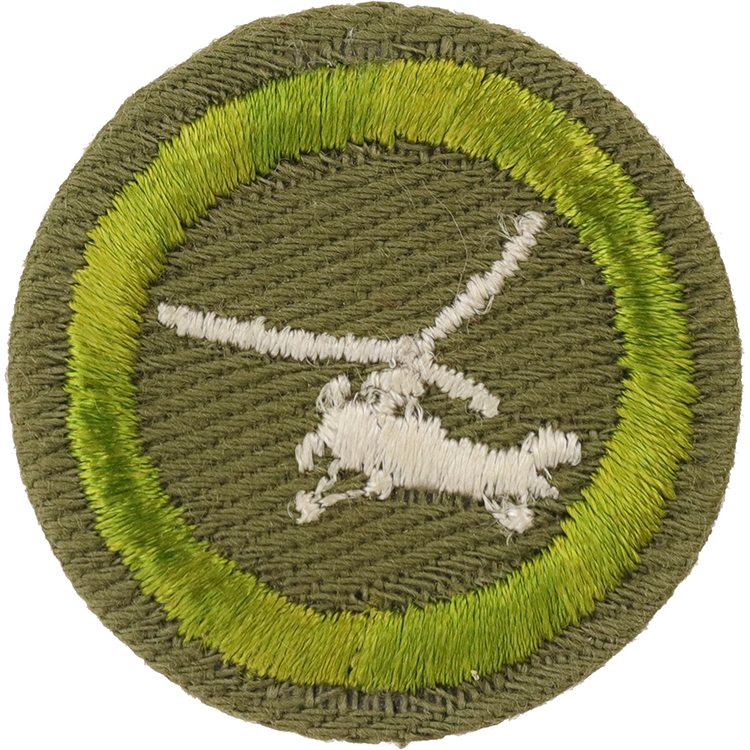
Fig. 1: AirDes-E2b-Front
- Cloth: Khaki right twill
- Embroidery: Cotton lock stitch

Fig. 2: AirDes-E2b-Reverse
- Back: Plain NO imprint with starch
Item Name: Airplane Design 1947 - 1952
Item ID: AirDes-E2b
Collector Rating: 10
Requirements December 1942 until June 1952
1. Point out on rough diagrams or on photographs, the outstanding differences in design of full scale planes used for five rather widely different purposes--such as first training, commercial transport, seaplanes on northern lakes, clippers, pursuit or others.
2. Measure the silhouettes of five modern full scale planes and record range of variation in the ratio of wing span to chord (aspect ratio); also in wing area as compared to stabilizer--elevator area.
3. Show design differences in camber of wings for high lift and for high speed--use rough sketches to explain reasons.
4. (a) Find approximate location of center of gravity in a flying model, and explain why a low center of gravity contributes to parasol stability; (b) if a model plane is balanced and wings of same cord, but of added span and weight were substituted at same structural points, tell what would happen to the center of gravity, and what the plane would tend to do in flight.
5. Show by rough sketches why dihedrals, sweepbacks, and relatively high wing tend to give a model stability in flight.
6. Build, test and report flight performances of two flying models of same general size, but of quite different design. For the test, use same power plant and propeller. If desired, the Scout may build but one of the two test planes, matching it against one he or his friends now have, AND then offer as the second of the two to be built, an original unconventional or experimental flying model.
7. Prepare approximate or rough scale drawings of the two models used in the test Requirement No. 6, and point out the principal design differences.
8. Fly one or more of the Scout’s own model planes in competition involving not fewer than four planes.
9. Measure four flying model planes of Requirement No. 8 and present Counselor with their comparative flight records and a list of their wing shapes and of their following design ratios:
(a) Wing span to mean cord;
(b) Wing span to propeller diameter;
(c) Wing span to fuselage length;
(d) Dihedral in inches per foot of span;
(e) Wing load in ounces per square
(f) Maximum wing camber to chord.